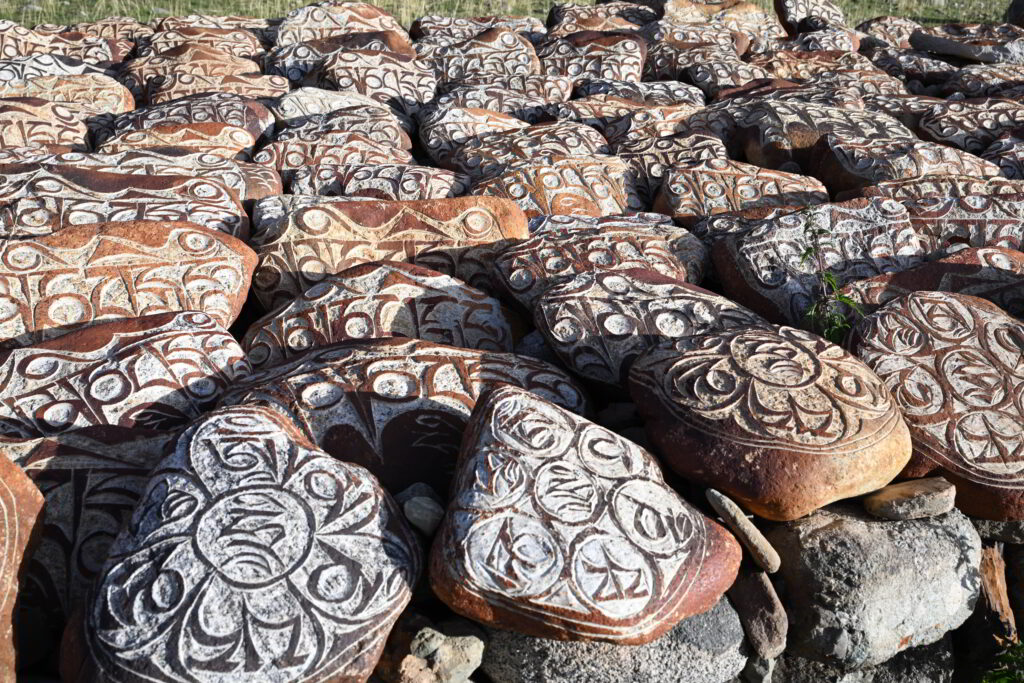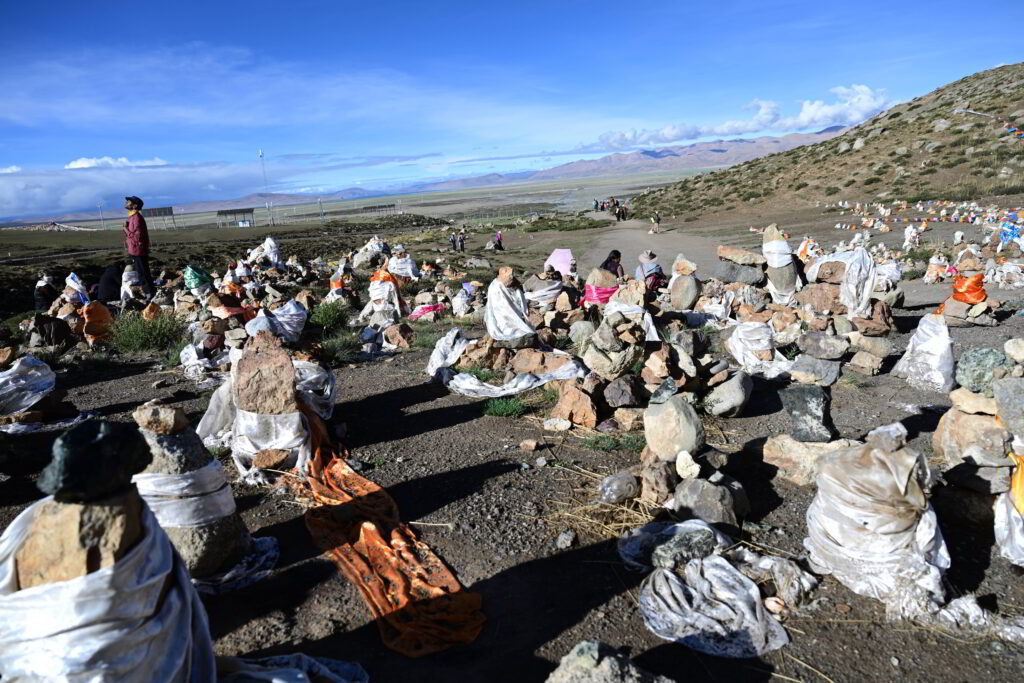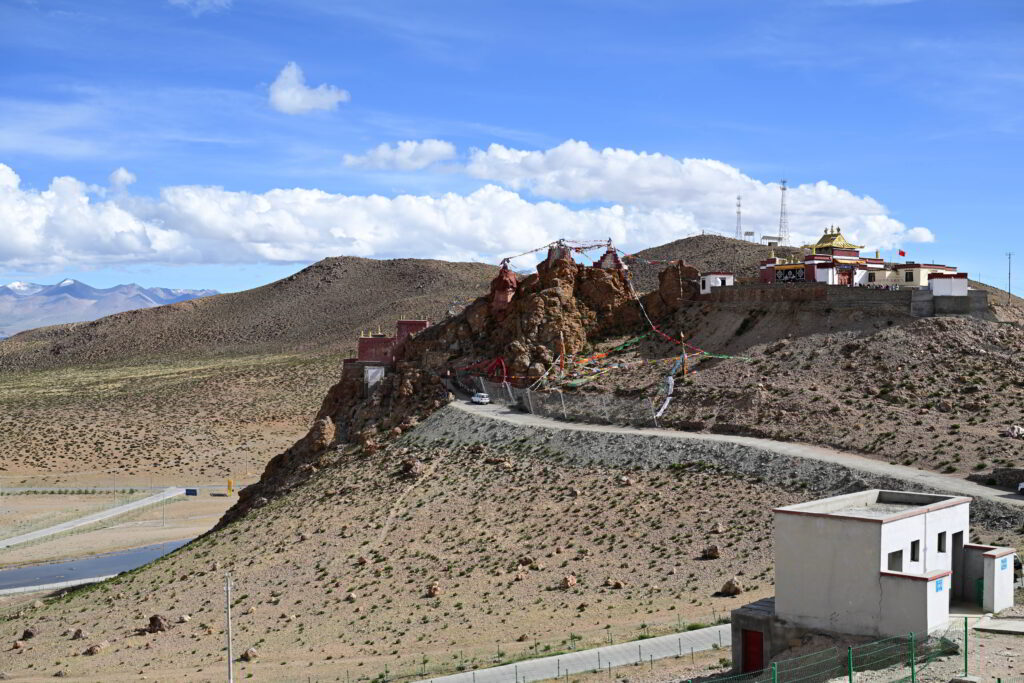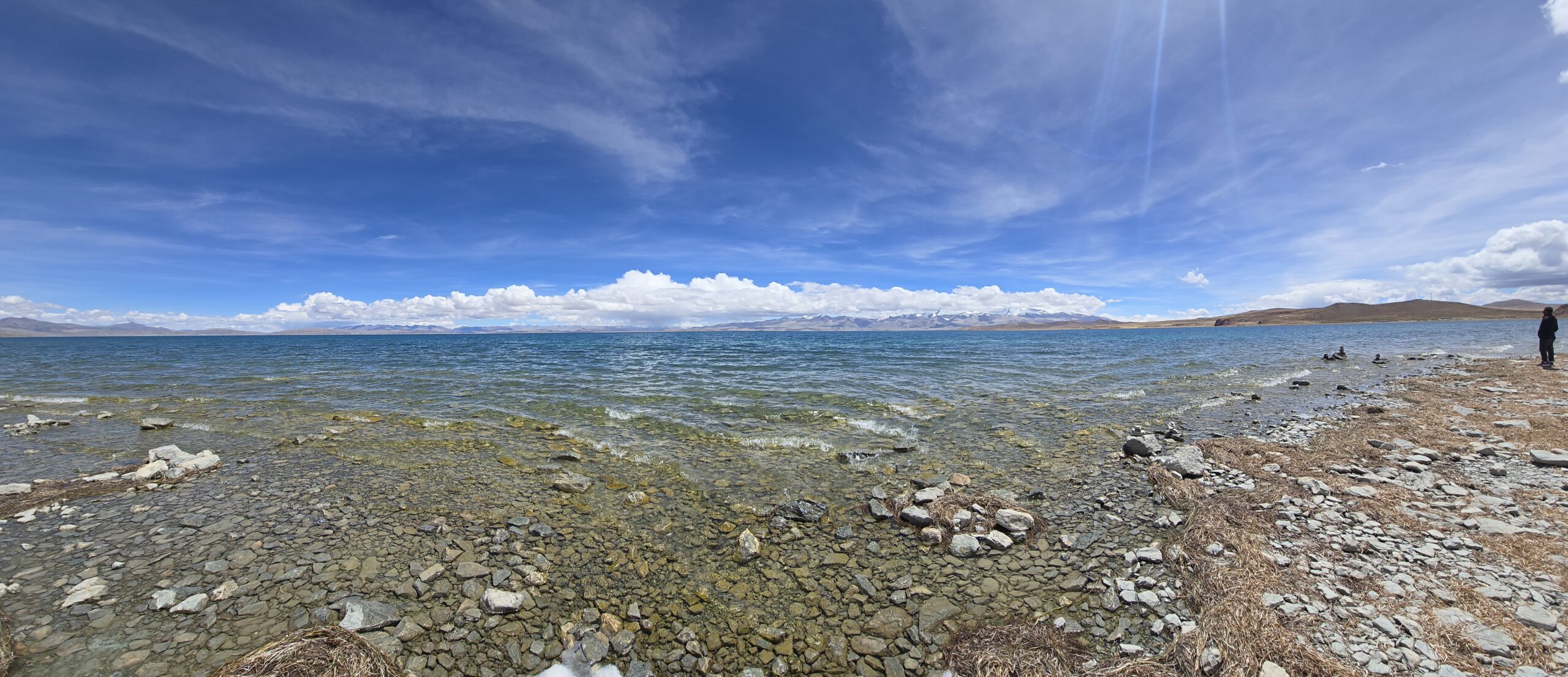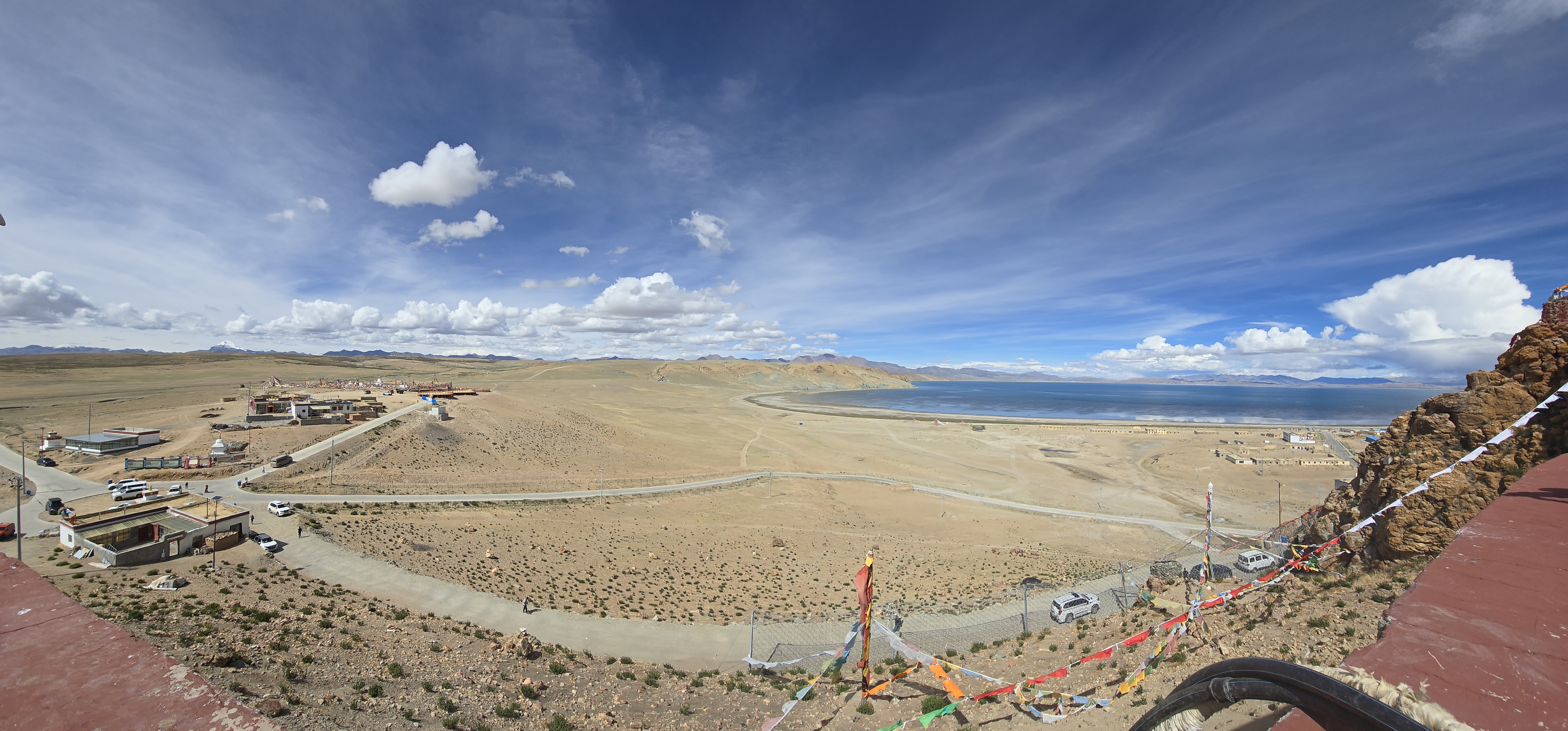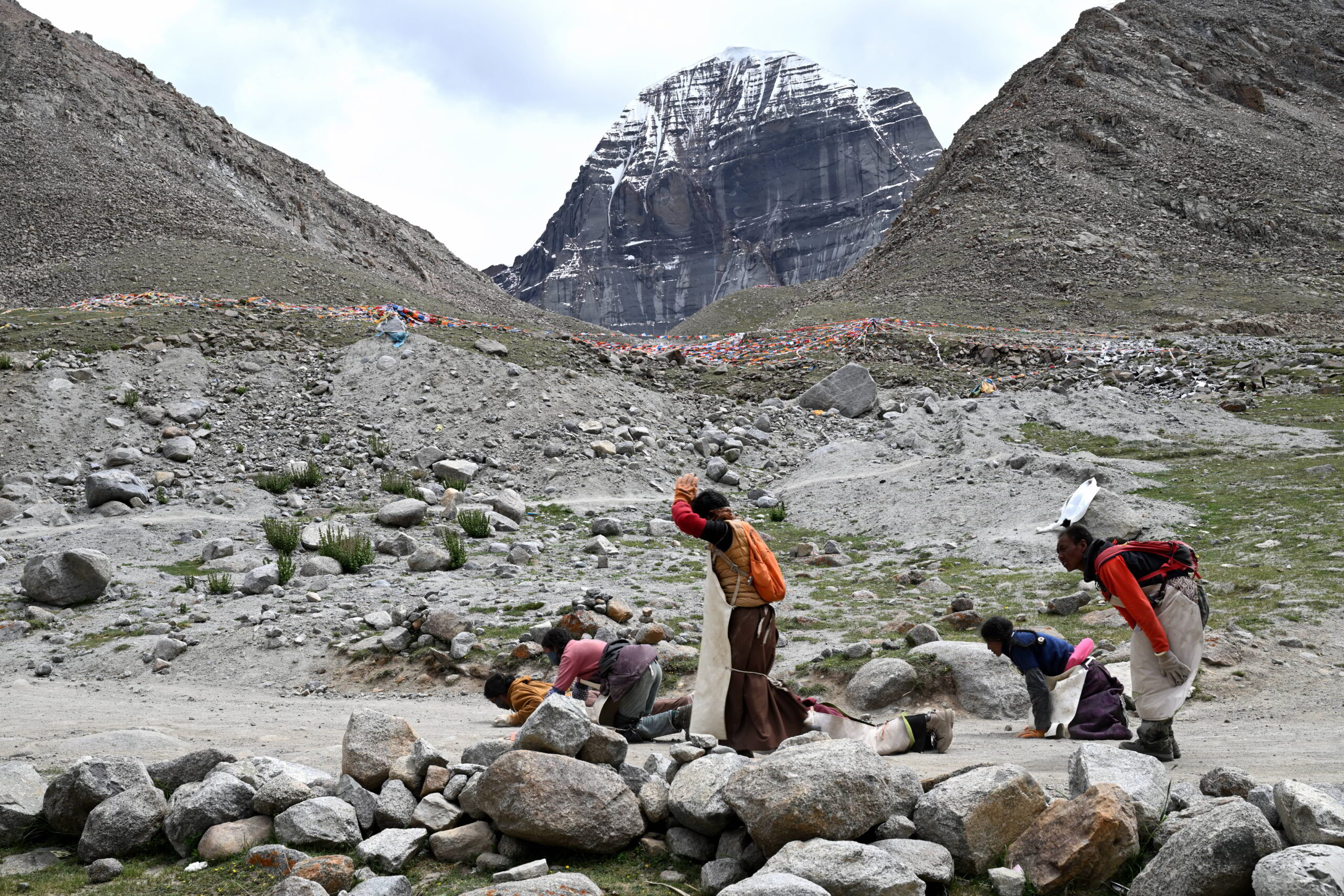A challenging journey of a lifetime – a pilgrimage for many, an uplifting experience for others
Mount Kailash holds a sacred place in the hearts of adherents from multiple religions, including Hinduism, Jainism, Tibetan Buddhism, and Bon, the indigenous Tibetan faith. For Hindus, it is the revered abode of Lord Shiva. Tibetan Buddhists consider Mt. Kailash the dwelling place of Buddha Demchok. In Jainism, the mountain marks the site of the first Tirthankara’s enlightenment. For Bons, Mt. Kailash is a potent nine-story swastika mountain, embodying supreme spiritual power and serving as the home of their chief deity. Across these traditions, Mt. Kailash is a unifying symbol of profound religious significance.
Known-unknown facts about Kailash
- Kailash stands at 21,778 ft. It’s not one of the highest mountains on Earth, but remains a mystery. There’s a myth that it’s hollow inside.
- Kailash has never been climbed and stands alone on rugged terrain without any other mountains nearby.
- The mountain is pyramid-shaped and looks unique and mysterious.
- Mt. Kailash has cross marks on the body with a serpentine-shaped head when seen from north face.
- Tibetan pilgrims typically complete the 52 km circumambulation route over the 5600-meter (18,500 feet) Dolma La pass in 15 hours, while others take 1-3 days.
- Except for the Bons, the kora is done clockwise. Bonpo pilgrims wear black and travel fast anti-clockwise.
- There is an inner kora trek, which is very challenging and involves technical climbing. Tibetans complete 17 outer koras before entering the inner kora.
First day (from Darchen to 1st Camp)
We took the bus for the first 4 km through Darchen, then embarked on our 11 km trek to the first camp. While the terrain wasn’t difficult, the altitude made the hike somewhat strenuous. For my wife, a first-time hiker, acclimating took time. We traversed barren yet beautiful mountains, a river flowing by our side, but the heat – undeniably intensified by global warming – and dust made the trek exhausting. I was awestruck by Tibetans prostrating to complete the kora! Prostrating even once at high altitude seemed impossible, our hearts racing with each uphill step. Tenzing, our guide, explained that prostrating the full 52 km typically takes about 20 days, a pilgrimage Tibetans strive to do once in a lifetime. I felt compelled to bow before these devotees, rather than snapping a frontal photo, for they embodied the divine energy of the Kailash pilgrimage.
The first sight of the holy mountain near camp erased all fatigue. I ascended further for a closer look at Kailash, marveling as a storm rolled in with heavy rain, only to have the clouds part and the blue sky dazzle above the mountain. That full moon night at Camp 1, the stars shone brightly over Kailash – a celestial sight. Alas, my fellow traveler had left the borrowed tripod on the bus. Though my cell phone did a passable job, the image of Kailash bathed in moonlight will remain vivid in my mind, forever undeveloped.
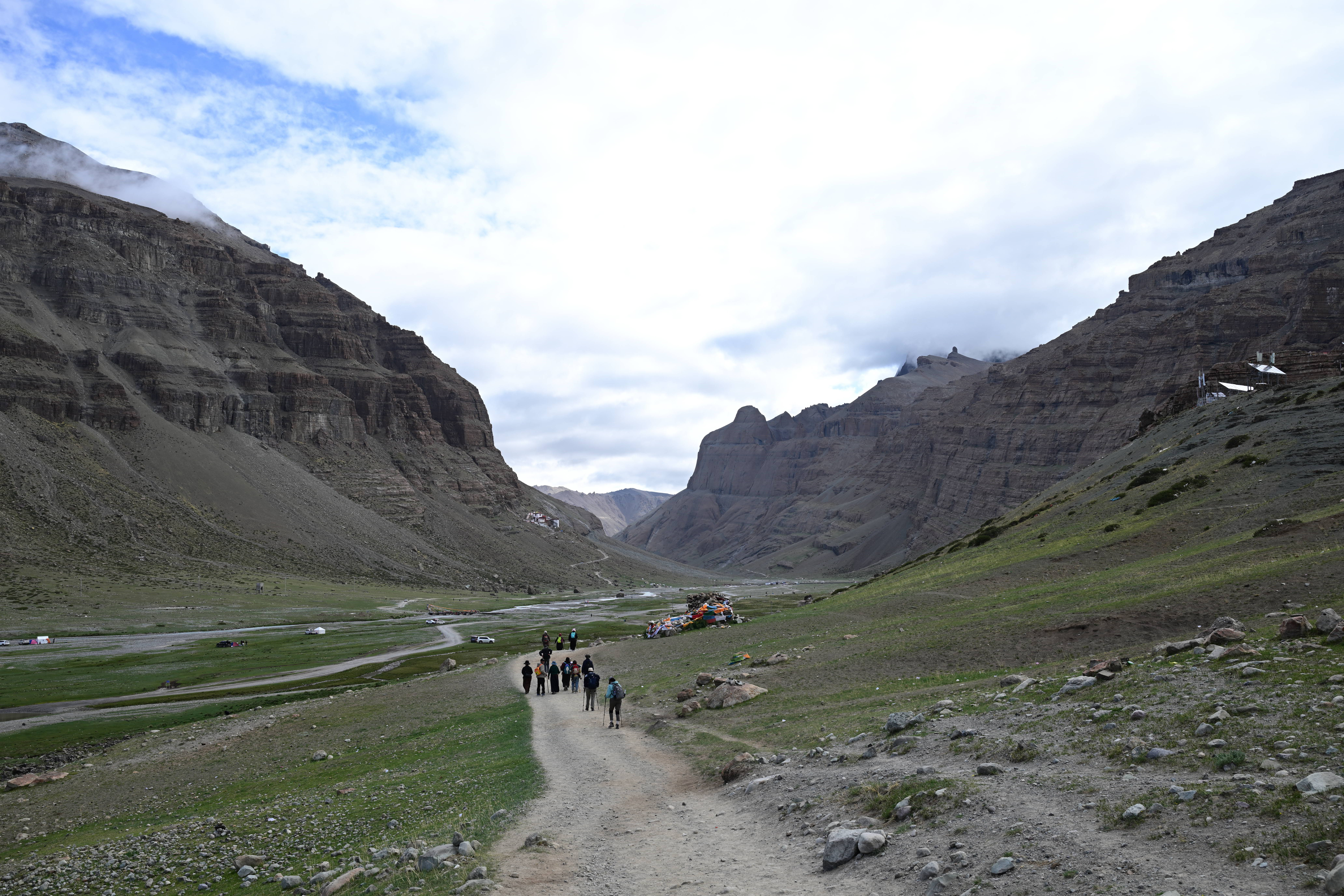
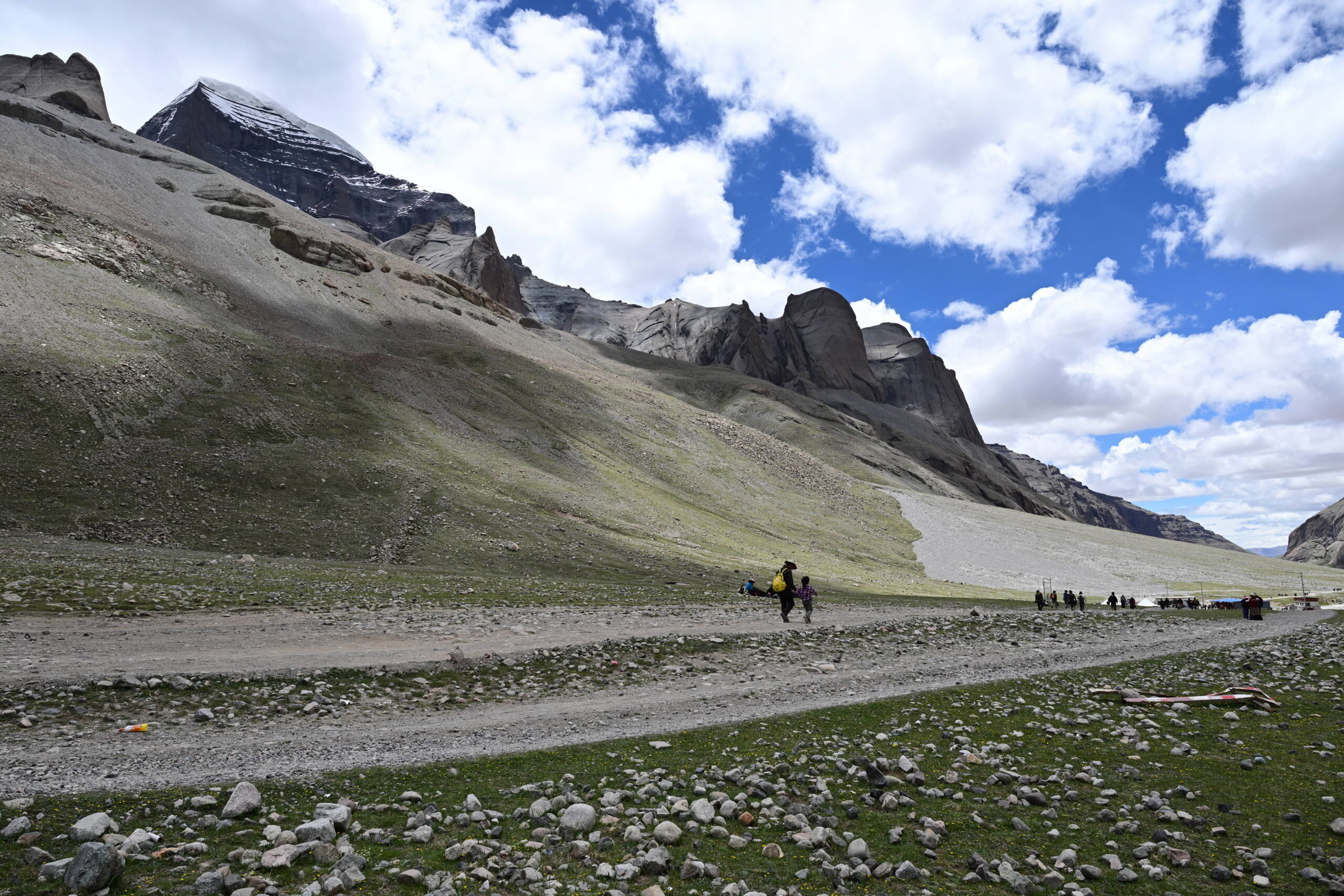
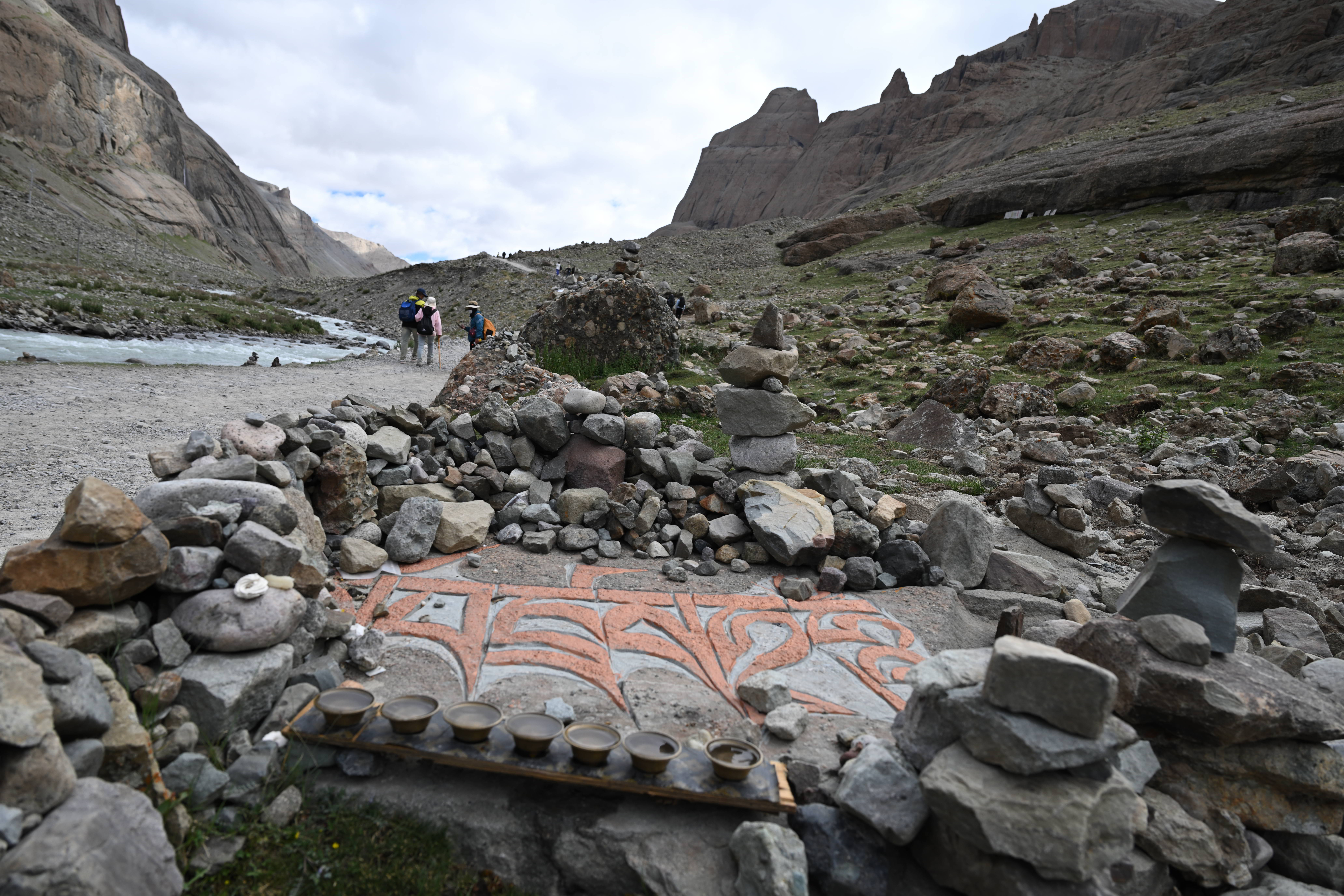
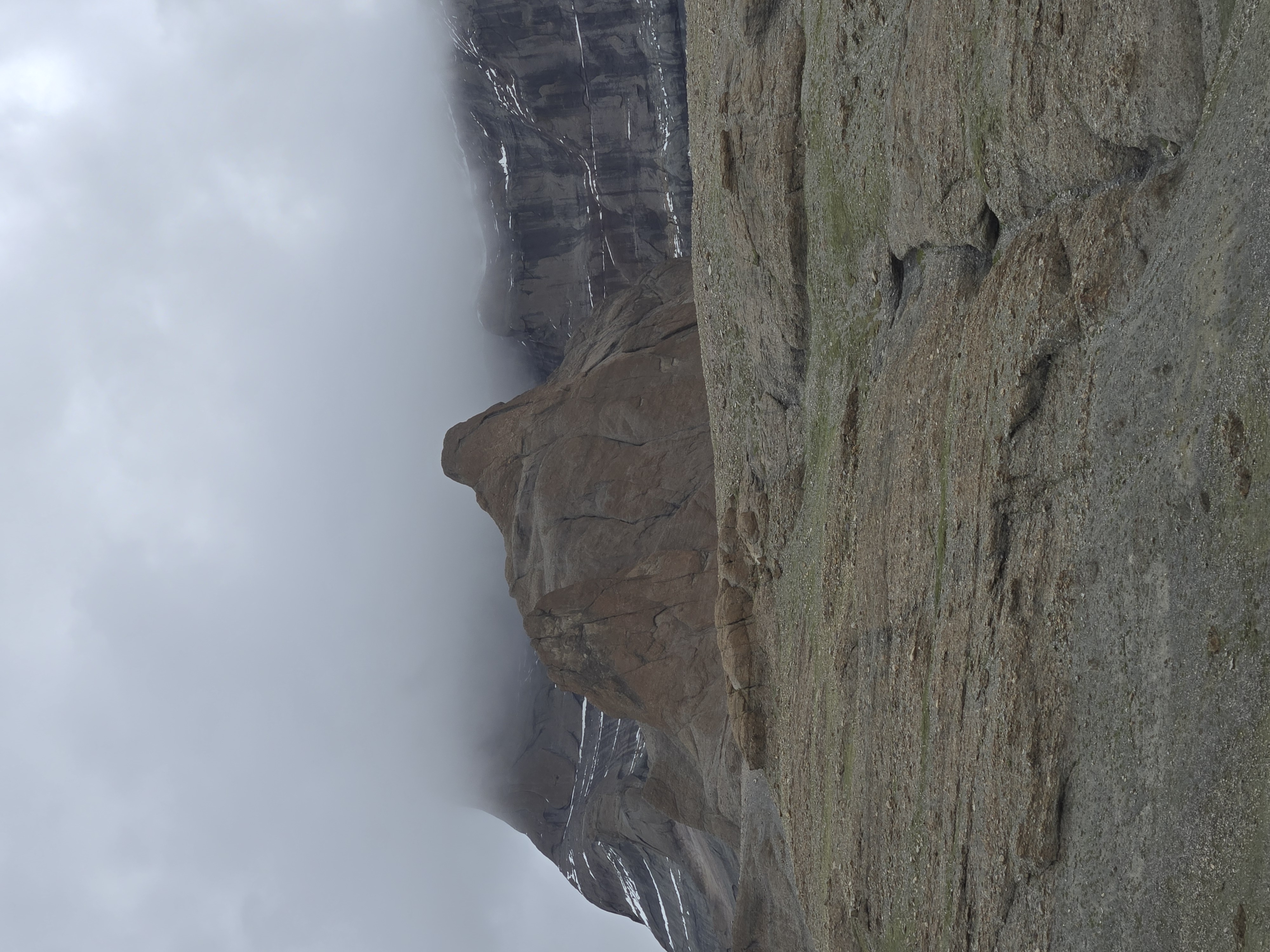
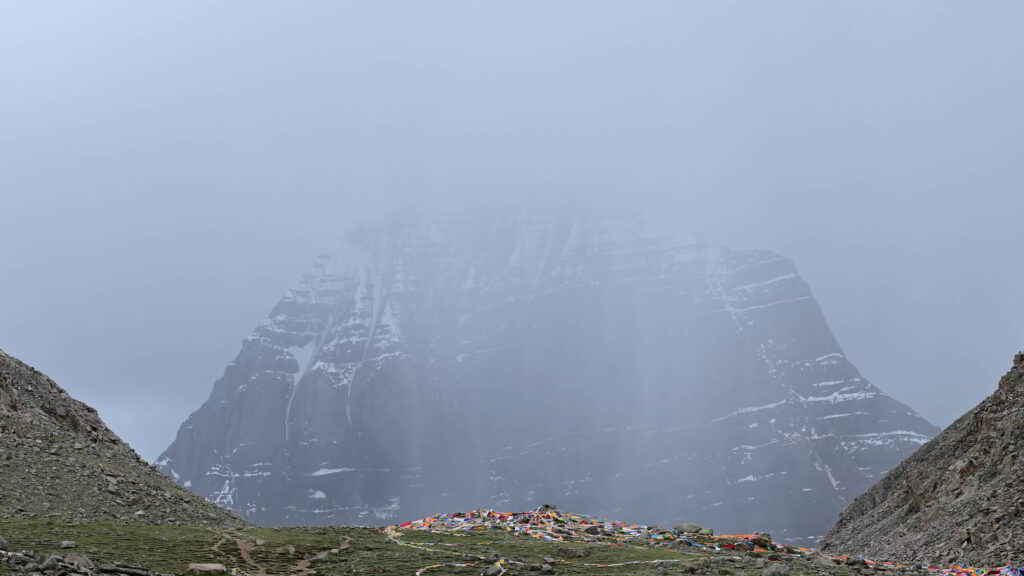
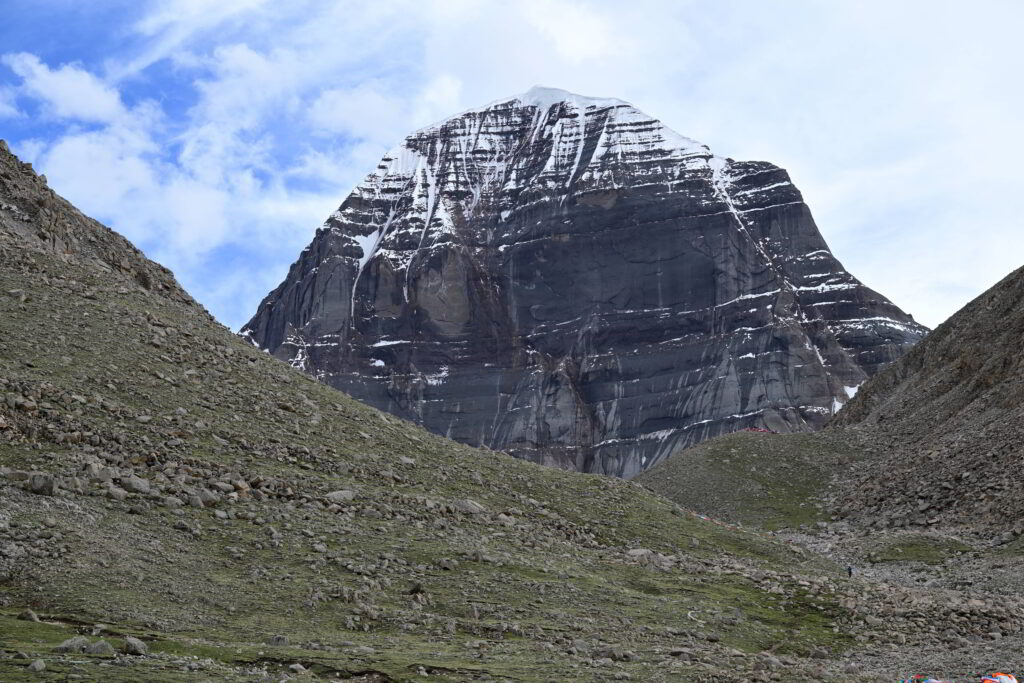
Second day (Crossing over Dolama La Pass to Second Camp)
We set out at the crack of dawn, hoping to cross the 18,471 ft (5,630 mt) Dolma La Pass before the scorching sun and shared horses crowded the narrow path. In Darchen, a young woman who had completed the kora warned us that attempting to cross the pass in the full sun at high altitude had caused her to hallucinate. Undeterred, we departed under the light of the full moon, with white clouds hanging over the black mountains. Hiking in the twilight was an surreal experience; the headlamps of fellow trekkers ascending the first pass twinkled like an illuminated garland.
The next landmark was the Sky-burial point, a site of a unique Tibetan funeral custom. As the altitude increased, every step became more labored, my breath shorter. From this vantage point, the golden glory of sunrise kissing the peaks was a breathtaking sight. Yet my prayers that day were not for beauty, but for shade to shield us until we traversed the treacherous Dolma La Pass.
Climbing Dolma La Pass was an ordeal. We saw numerous hikers succumbing to altitude sickness, taking hits of oxygen to cope. I was determined to cross without it. As we ascended higher, Tenzing continually reminded us that the summit was still a ways off. And then, finally, we reached it! The celebration after that formidable ascent to 18,500 ft was jubilant – prayer flags fluttered, paper prayers danced in the air, incense sticks wafted their fragrant smoke.
The initial descent revealed the emerald gem of Gaurikund, its beauty captivating our senses. It radiated a soft, holy glow. I yearned to explore it, but the taxing hike and steep descent ahead made that seem daunting. I tucked that desire away, a dream for another day. The descent from Dolma La Pass proved treacherous, the loose gravel causing even seasoned locals to stumble. My prior experience with such terrain aided me, but my wife struggled; Tenzing’s selfless assistance was invaluable.
Exhausted, we paused at a teahouse for lunch. My wife was spent, and we still had over half of our 22 km journey to reach the second camp. Tenzing, too, looked drained (for reasons I’ll omit). Seeing him shoulder a wooden pole, I took charge, shouldering two backpacks and the camera, determined to reach shelter before nightfall. At dusk, we stumbled in; our waiting group cheered, “You guys made it!” The night brought rest, but the final day’s hike loomed..
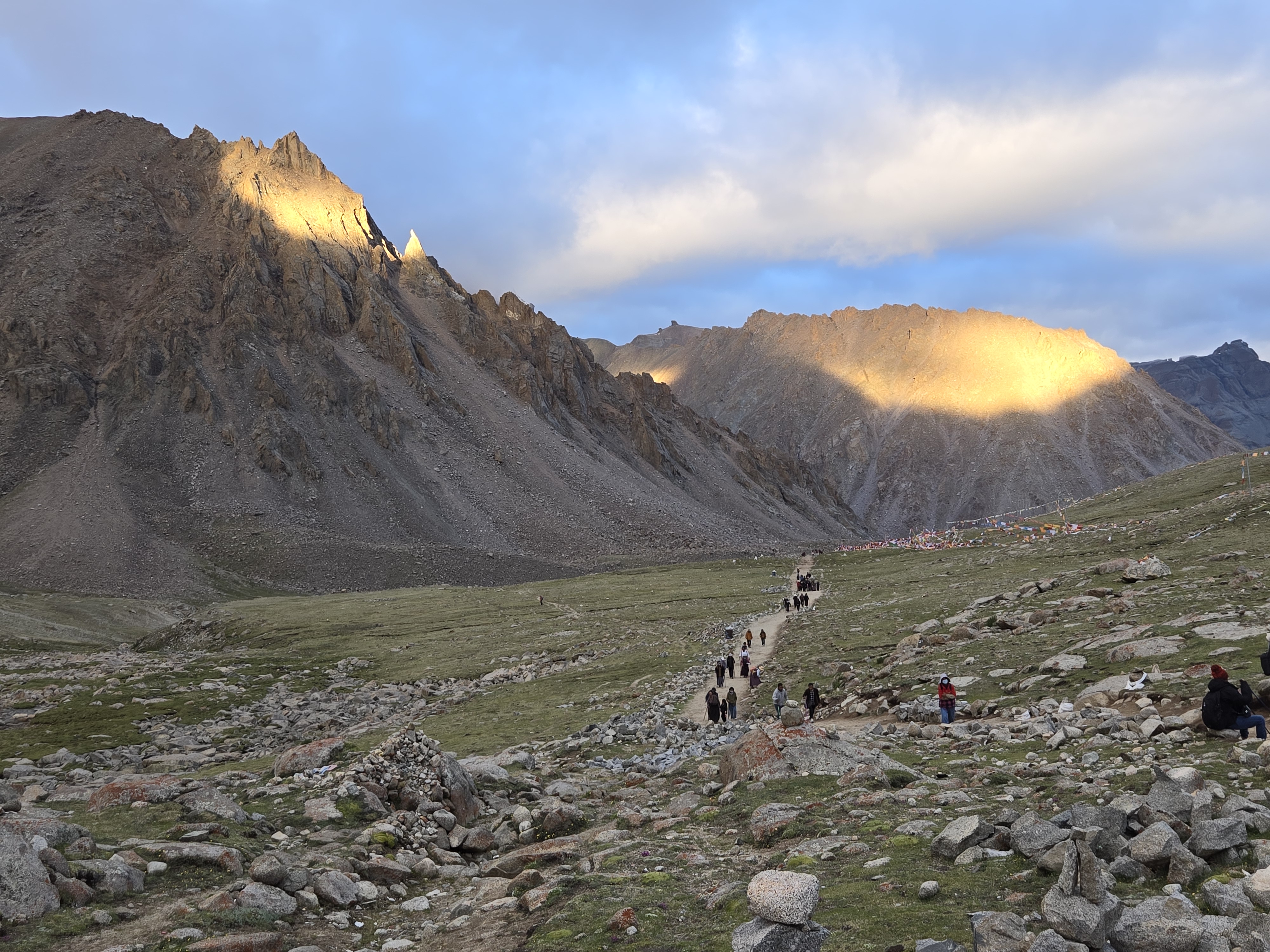
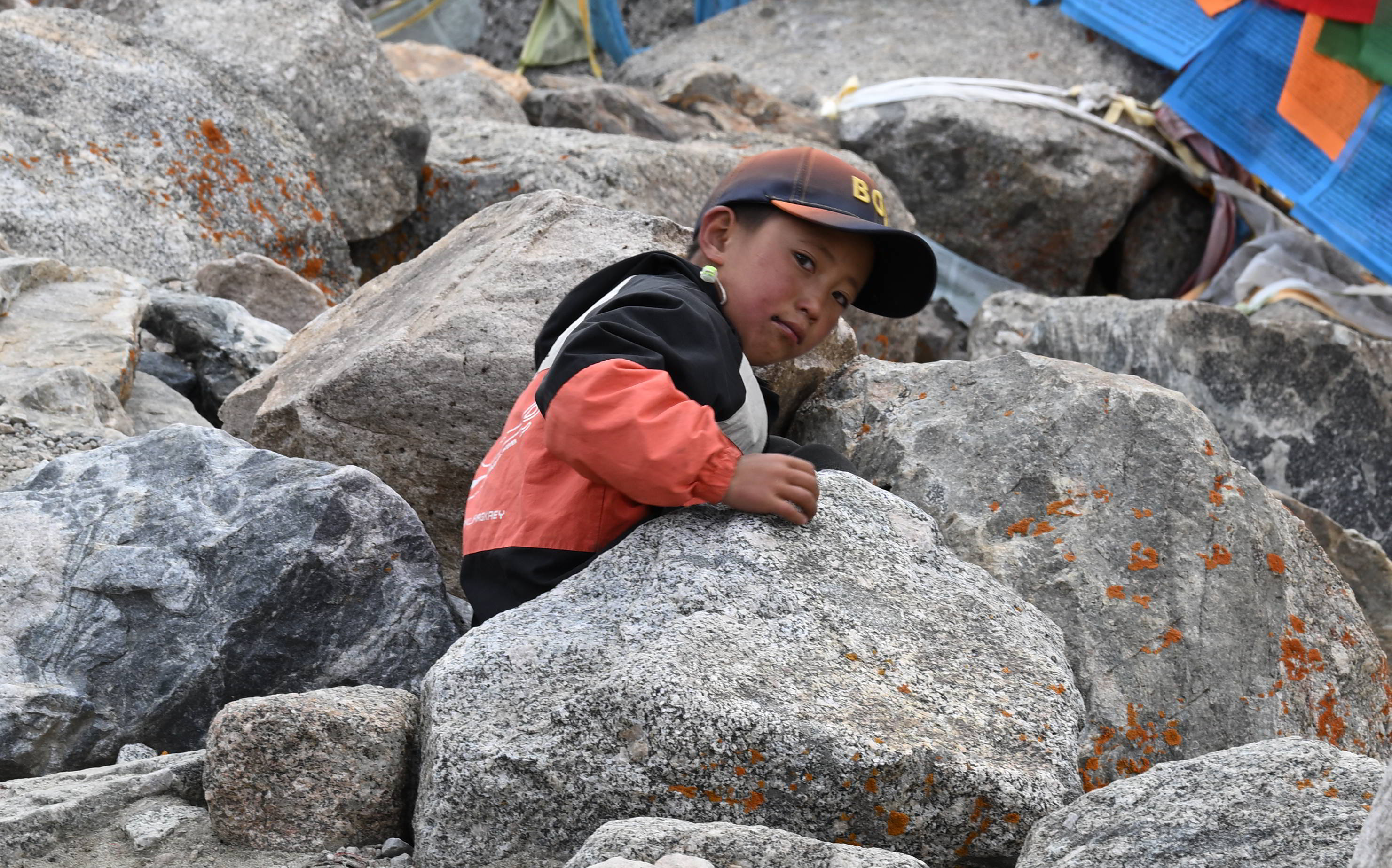
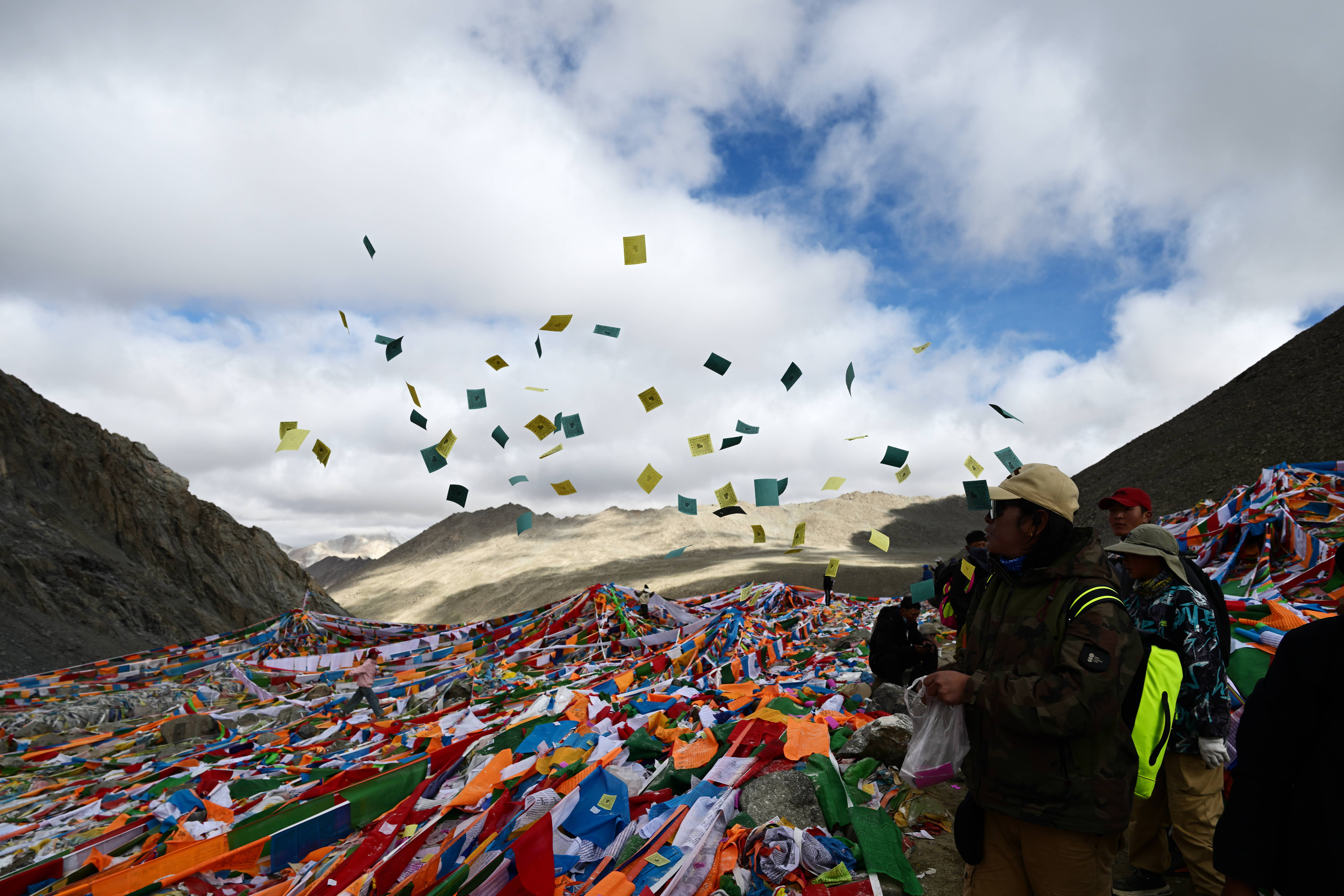
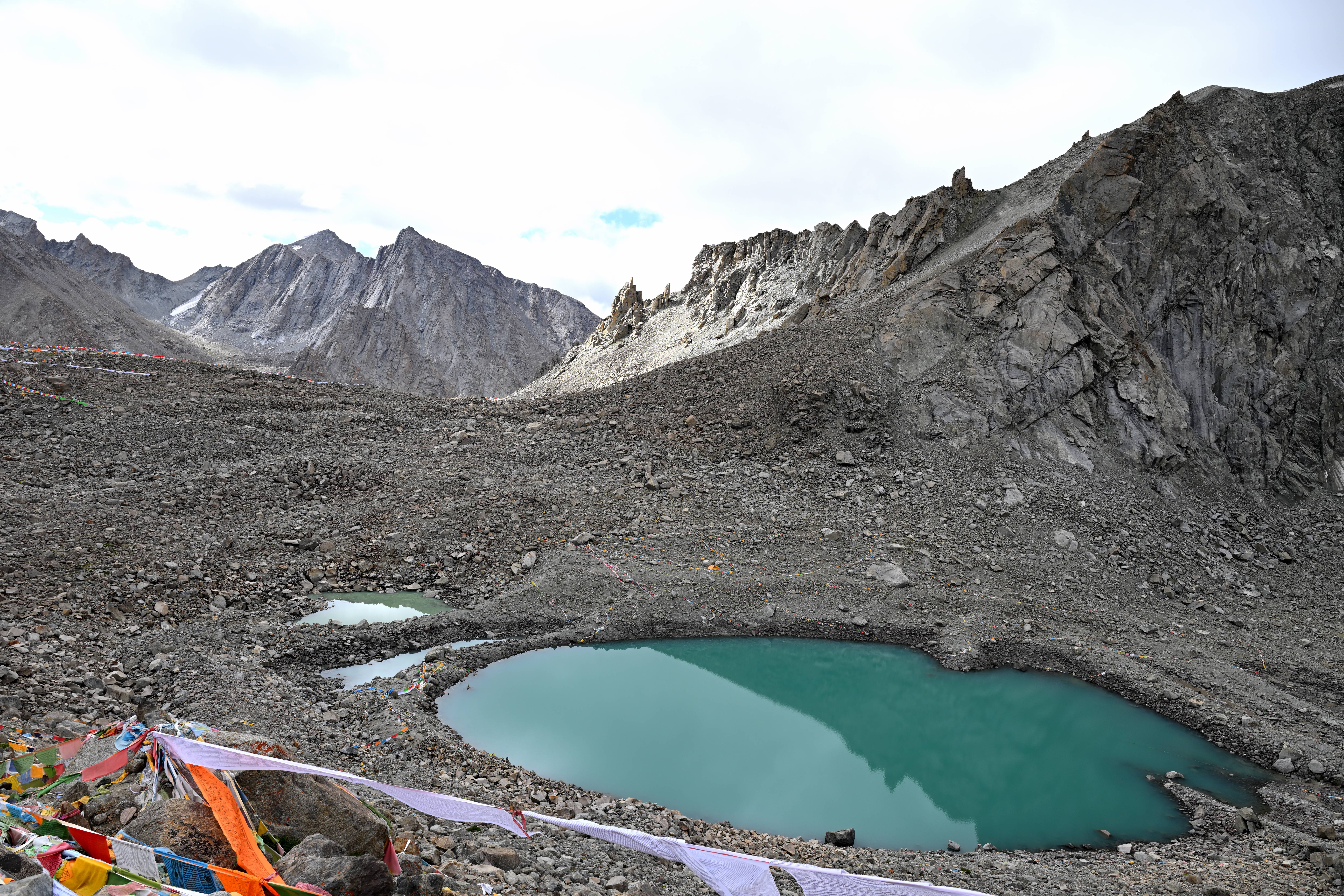
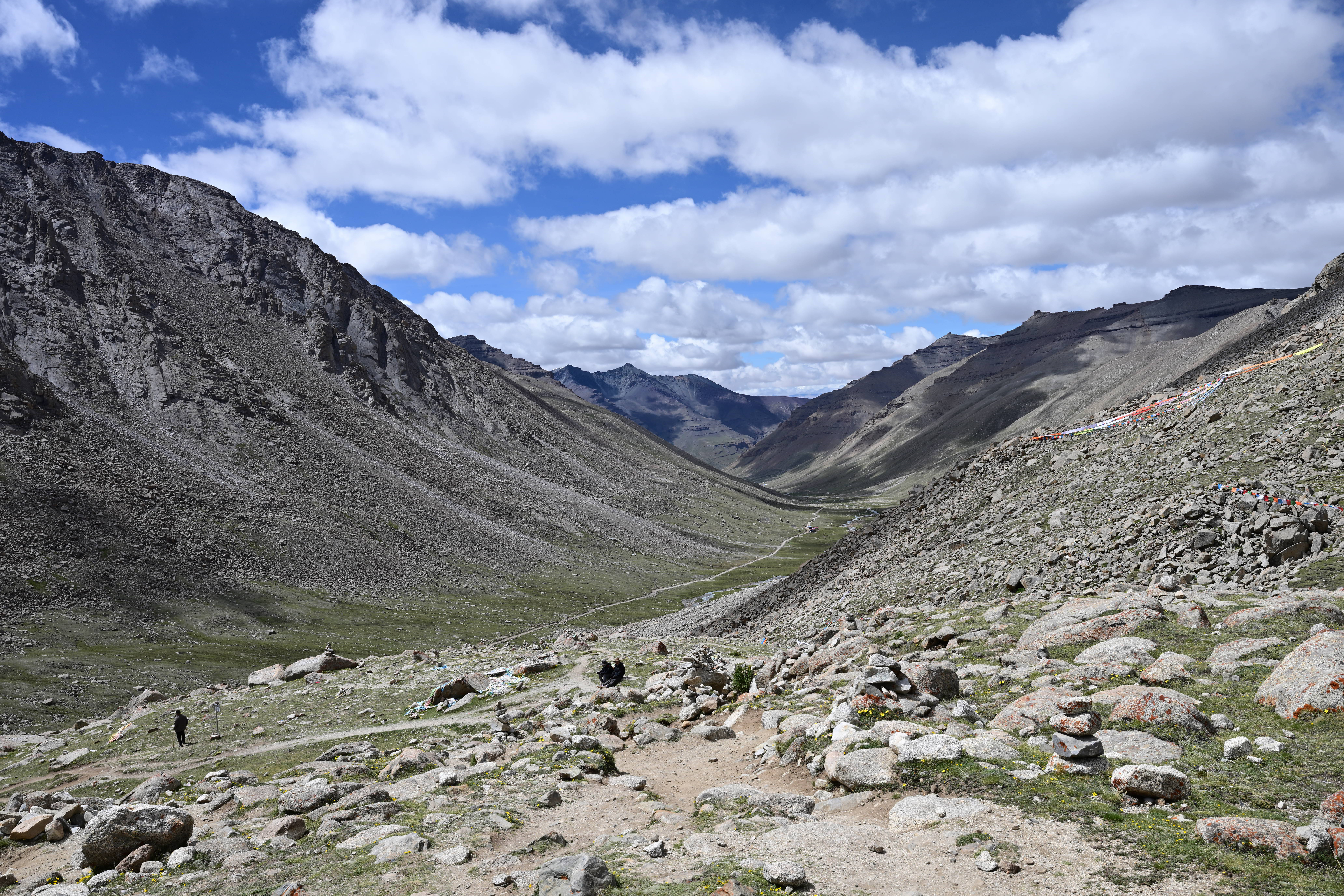
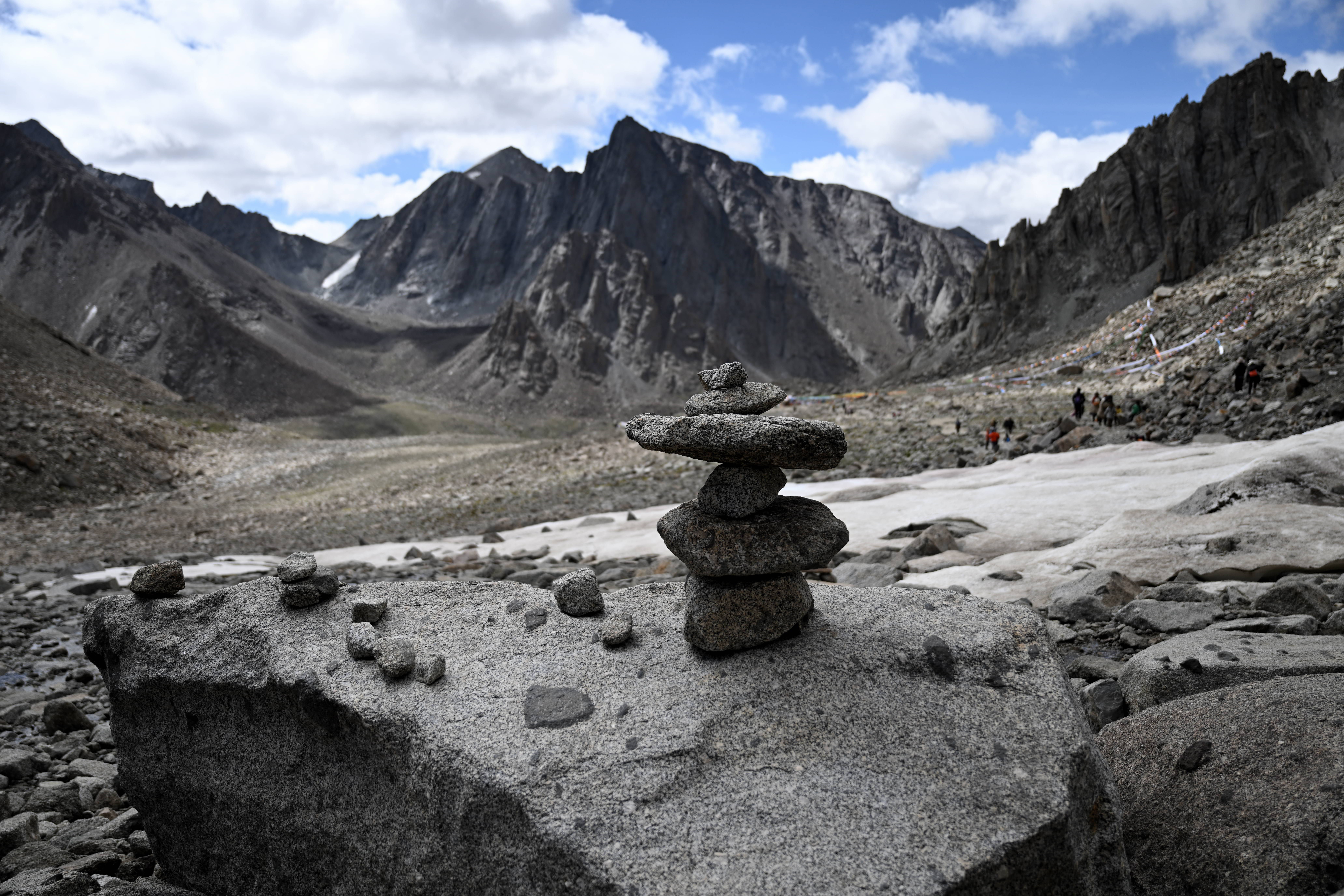
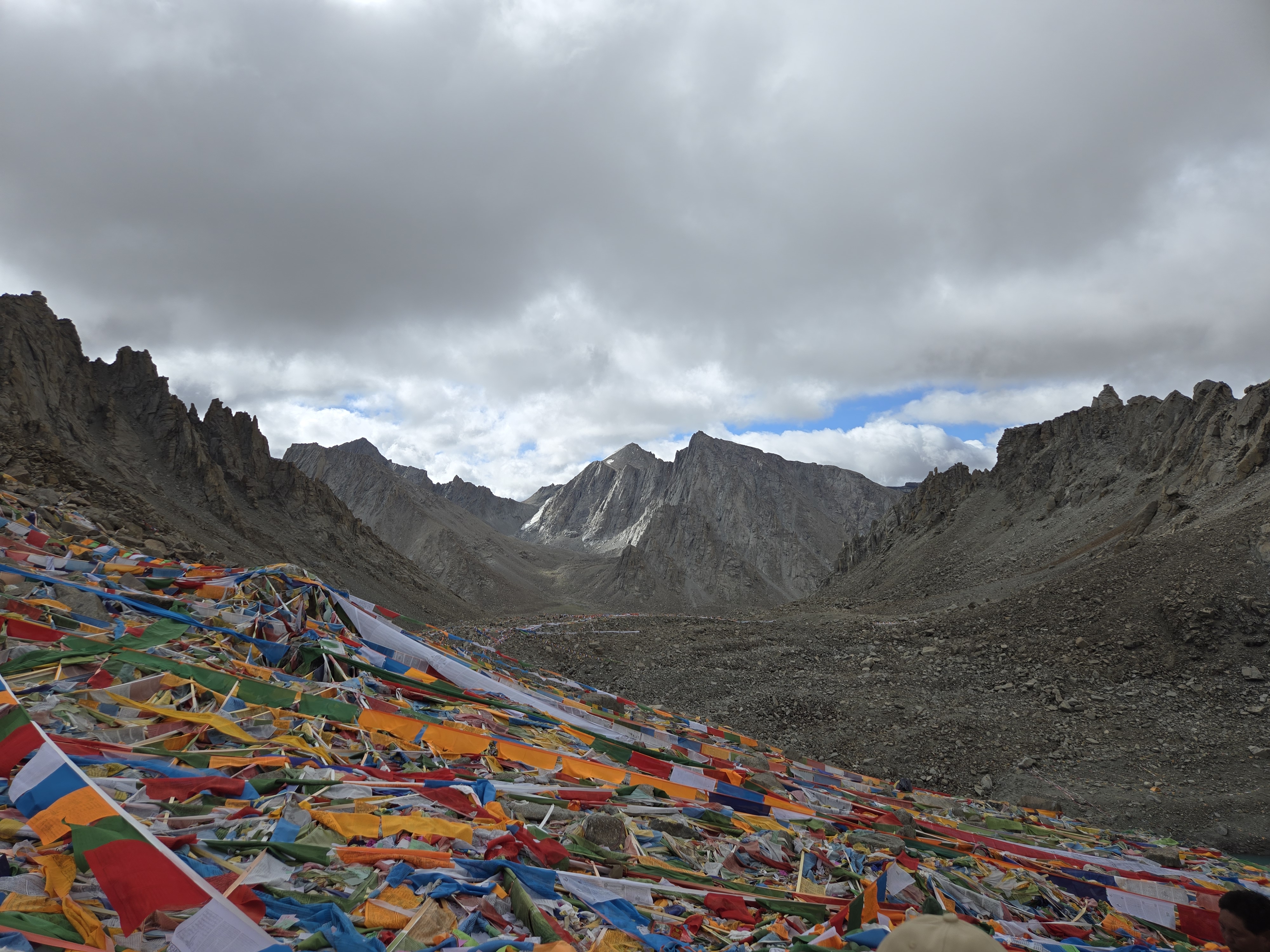
Third day (back to Darchen and to Manas Sarovar)
On the third day, we embarked on an 11 km trek to Zongdui Teahouse, where a bus would return us to Darchen. We set out early, and the morning proved serene. The valley hike was a delight as dawn broke; a river babbled beside us, yaks grazed peacefully, and the morning sun cast a warm glow over the valley. Stones inscribed with the sacred Buddhist mantra – Om Mani Padme Hum – dotted the wayside, and yak horns stood as symbols of protector deities. Before we knew it, our guide stood at the teahouse, greeting us with the news that our 3-day Mt. Kailash kora was complete. It was time to head back to Darchen and the hotel’s welcome showers.
That afternoon, we visited Manas Sarovar. According to Hindu myth, this “lake of the mind” was created by the gods as a heavenly abode for celestial swans, situated near the sacred Mt. Kailash. On its banks stood the meditation cave of Guru Padmasambhava, a revered Tibetan Buddhist master. With Tenzing’s guidance, our bus driver navigated the shores of the holy lake, offering a stunning view of the snow-capped Gurumandala peaks. I have bathed in several sacred Himalayan rivers, but the water of Manas Sarovar defied description. I lingered in the crystal clear lake, mesmerized by the waves, the sky reflected in its vast expanse, the blue sapphire hue almost otherworldly. It was as if the world had dissolved.
At over 15,000 ft, Manas Sarovar is a freshwater lake and the source of four major rivers: the Indus, Sutlej, Brahmaputra, and Karnali. The lake’s surroundings – Guru Rinpoche’s holy cave on one shore, Mt. Kailash towering across the water, the expansive landscape – fostered a profound sense of serenity, an indescribable spiritual experience in this sacred Tibetan land. It was a glimpse of the Sanskrit concept of “purna”, the fullness of divine consciousness. Manas Sarovar was the perfect culmination of our Kailash kora journey.

